Trey Anastasio's 12-11-97 Waste solo was immortalized in Bittersweet Motel, Todd Phillips' 2000 documentary about Phish. This minute and a half piece of musical perfection has singlehandedly spurred an entire generation of Phish fans to either pick up the guitar, or to at least take their current playing more seriously.
I was one of those kids, who watched Trey absolutely destroy that solo on film and thought “I don't care how long it takes, I want to be able to do THAT.”
I want to help YOU so that you can learn to play it too!
In this lesson you'll learn how Trey Anastasio:
- Uses notes of the parent major scale to create contrast in his solo
- Uses chord tones and rhythms to cultivate tension & release
- Can play the same lick over and over while adding twists to keep the listener engaged
- Mixes the major scale and major pentatonic scales while improvising
If you consider yourself a beginner, or you want to learn an easy way to play Waste – you should check out this tutorial
Grab your guitar and let's dive in!
Gear Used for This Video
Video Recording:
Performance:
- Paul Reed Smith 2013 Hollowbody II in Livingston Lemondrop Finish
- Ibanez TS9 with Analogman Silver Mod Pedal
- Analogman Bicomprossor Pedal (Ross Side engaged)
- TC Electronic Viscous Vibe Pedal (Univibe Clone)
- Original 1966 Fender Deluxe Reverb Amplifier with
- Pickboy Pos-a-Grip Jazz Classic Tortoise Shell Cellulose 1.50mm Picks
- Planet Waves Custom Series Right Angle Guitar Cable
Audio Recording:
- MXL 990 Condenser Microphone with Shockmount (vocal capture)
- Sennheiser E609 Silver Super Cardioid Instrument Microphone (guitar capture)
- Audix CABGRAB1 CabGrabber Mic Clamp for Guitar Amps/Cabinets (holds Sennheiser e609 to guitar cabinet)
The 12-11-97 Waste Solo From Bittersweet Motel
Licks 1 & 2

In this solo, 99% of trey’s notes are coming right out of the G major pentatonic scale in the 12th position.
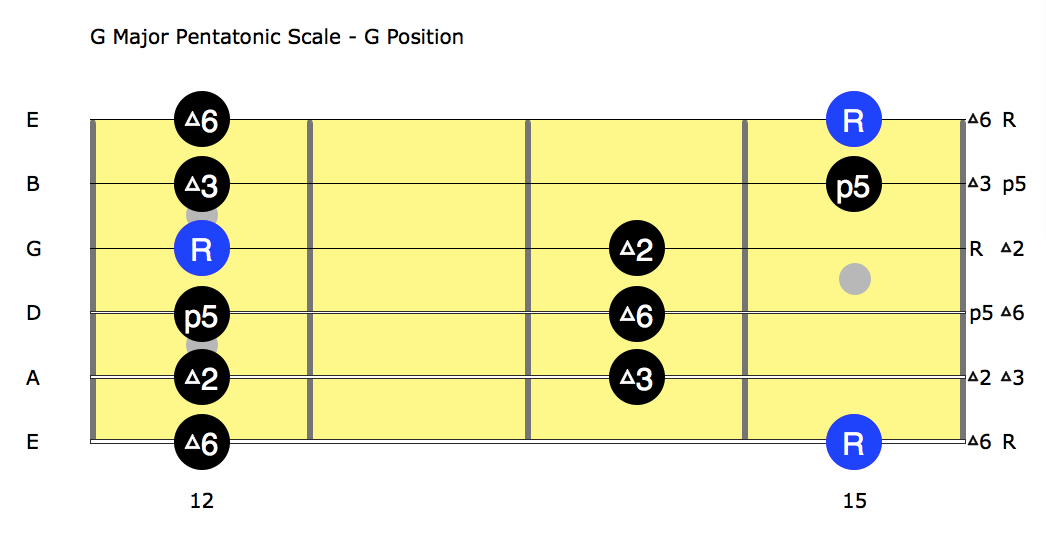
He shows us how one note, G, feels in the context behind all three chords of the solo, which are G, Am and C.
We see that G is the root of the G chord. G is the b7th of A minor, and G is the 5th of C.
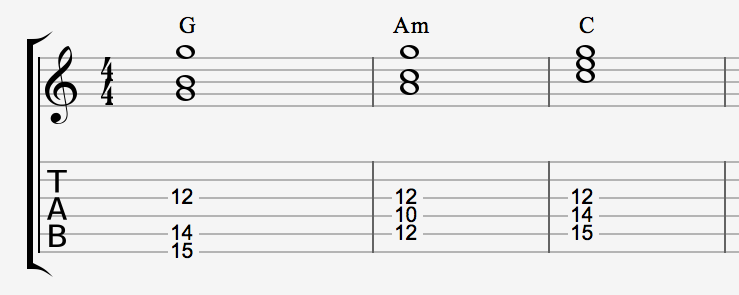
There’s that theme again, of contrast. All of those chord tones, are relatively stable. but the intense trills that surrounds these notes, immediately hooks us from the very beginning.
That’s why in the beginning of this solo, Trey is able to give us that feeling of tension AND resolution within just one phrase. We’ve got the stable chord tones contrasting with an intense rhythm.
Notice at the end of every phrase, he hits the D note over the C chord, and D is the 9th of C.

This wants to be resolved and hooks our ear and makes us want to listen to what’s going to happen next.
Licks 3 & 4

And what does happen next? Repetition. Trey repeats the licks over and over.
Licks 5 & 6

The solo then arcs upward in a beautiful, emotional way when he adds the C note. This is our one note that is outside of the G major pentatonic scale. I
That note, does exist in the G major scale, which is is like the G major pentatonic with two extra notes. C, and F#, which are the 3rd and 7th of G.
For this solo, we’re in the key of G major, so we can consider G major as the parent scale.
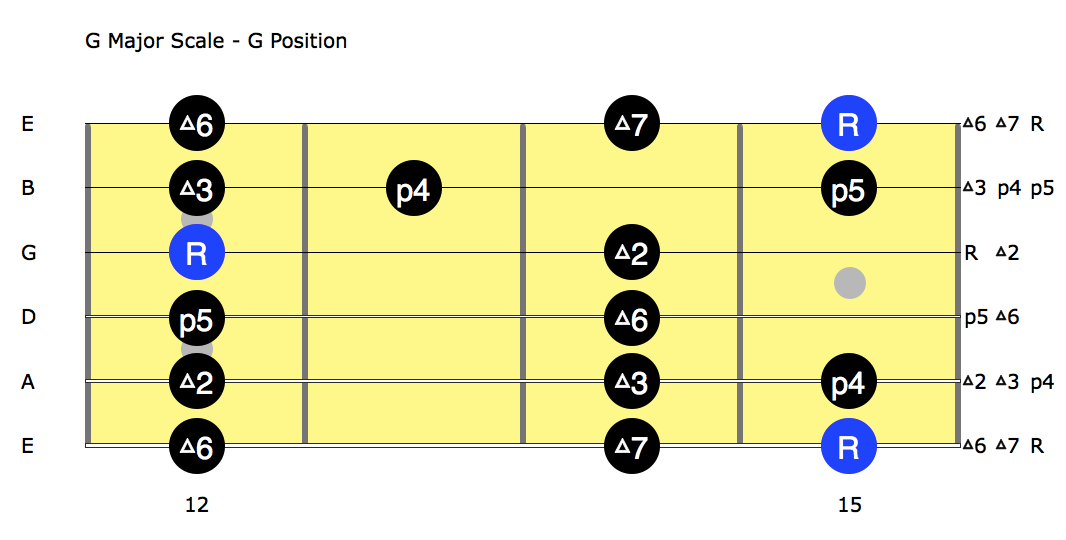
Trey is a master of using notes of the parent scale to provide contrast and create tension, over other chords in the progression.
So what does this mean?
At the end of the first part of the solo he, plays a beautiful four note lick over the C chord.
We’ve got four notes that are, again, right out of the G major pentatonic.
But remember that he is playing these notes over the C chord. – D – B – A – G.
Now the C Chord is made up of three notes. C- E -G.
In terms of our four note lick, only one of those notes are “within” the C chord – and that’s the G note, which is the 5th of C.
The other three notes – D, B, and A, are all extensions of the C chord.
- D is the 9th of C
- B is the major 7th of C
- A is the 13th of C
These sound beautiful because, again, we have that sense of contrast since they are “outside” of the C chord.

These notes of the G major pentatonic don’t really sound “interesting” over the G chord, but over the C chord, they have almost an ethereal quality.
Licks 7 & 8

After this, Trey takes the same lick he was playing at the beginning of the solo and plays it up the octave.
We’re still in the G major pentatonic scale, but now we’re in the 15th position.

Now to keep the listener’s attention, Trey just doesn’t repeat what he was doing before.
He’s still playing something similar, but with a twist.
We’ve still got similar pull off licks, but now he uses a bit of rhythmic displacement.
Licks 9 & 10

To end this solo, Trey crashes on the G chord in the 12th position, and then slides back down towards the headstock and plays an open Am and an open C chord to close it all out.














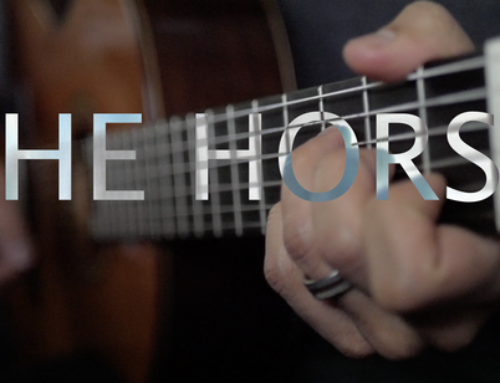

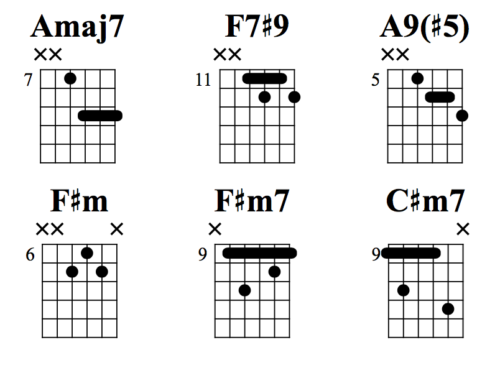

Leave A Comment